Theodore Clement Steele, American, 1847–1926
1910
Oil on canvas
125.73 cm x 105.41 cm | 49 ½ x 41 ½ in
Framed: 156.21 cm x 135.89 cm | 61 ½ in x 53 ½ in
Signature or date not visible, may be under frame
Owned by Columbia Club Foundation, Inc. Columbia Club, Indianapolis
Note: Portrait not available for public viewing.
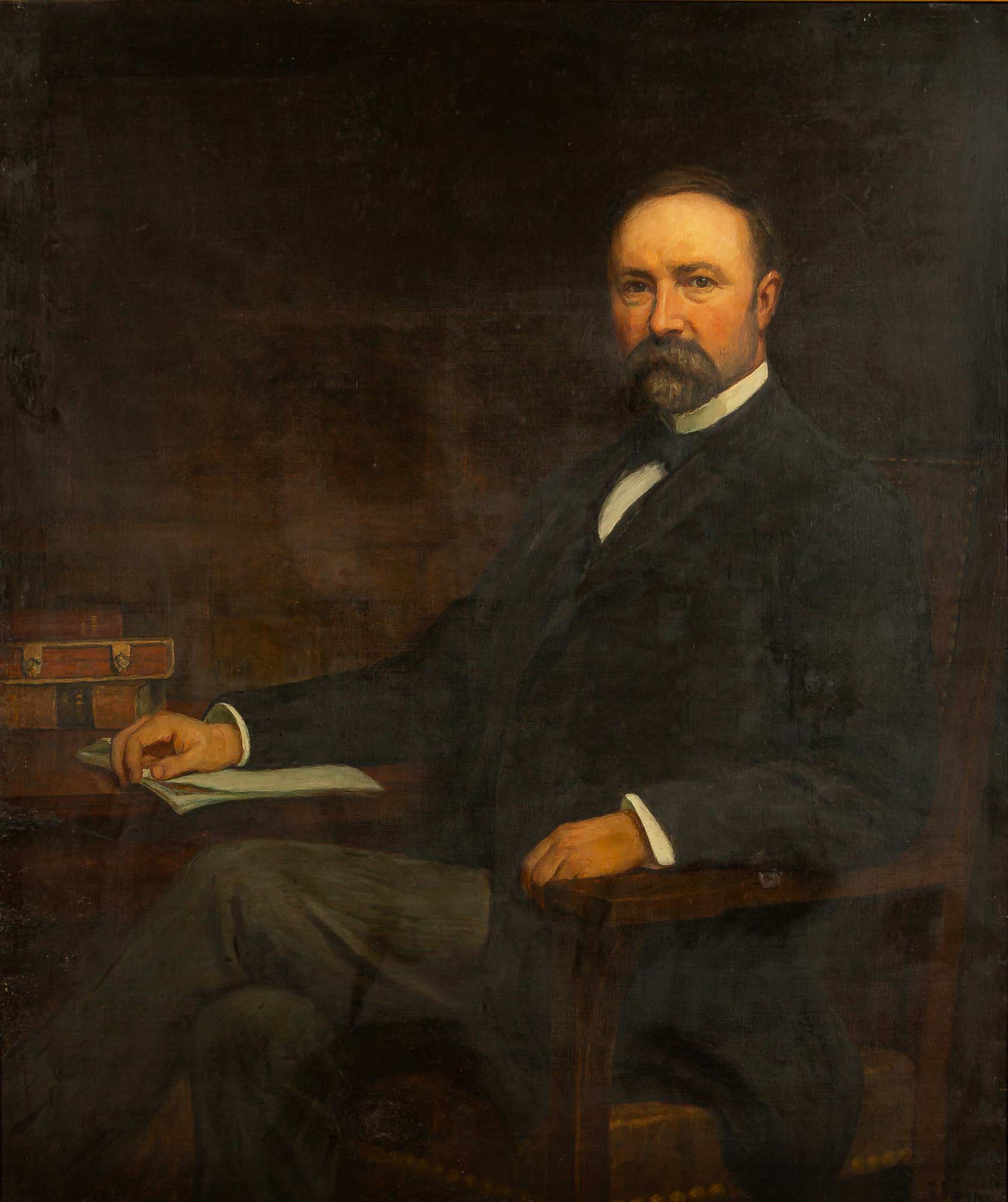
Charles Warren Fairbanks (May 11, 1852 – June 4, 1918) was the 26th Vice President of the United States under President Theodore Rosevelt. An Indiana lawyer and Republican politician, Fairbanks served in the U.S. Senate from 1897 to 1905 before becoming Vice President. During his political career, he was a prominent Indiana and national politician.
Fairbanks was born into poverty in a log cabin in Unionville Center, Union County, Ohio – May 11, 1852.
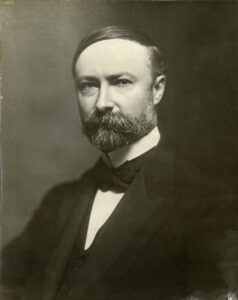
He graduated from Ohio Wesleyan University in 1872 and received his master’s from this school three years later. He obtained a position with the Associated Press and served in their Pittsburgh and Cleveland Offices from 1872 to 1874. During this time, he studied law and was admitted to the bar in 1874.
In that same year of 1874, he married a classmate Carnelia “Nellie” Cole (1848 – 1913), and the couple moved to Indianapolis. They had five children together.
For the next twenty years, Fairbanks practiced railroad law in Indiana, Ohio, and Illinois. He amassed a considerable fortune, which permitted him to give up the practice of law and enter politics.
Political Career
In 1897, Fairbanks was elected to the U.S. Senate. He served on several committees and as a close friend of President McKinley, he often served as the spokesperson in outstanding disputes with Great Britain.
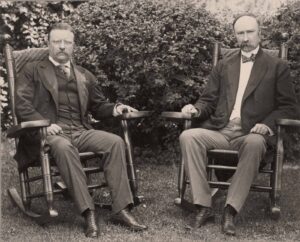
Fairbanks was elected to a second term in 1903 but resigned the next year when he began a four-year term under Theodore Roosevelt. Fairbanks was mentioned as a possible presidential candidate in 1908 but lost out to William Howard Taft.
In 1907 Roosevelt was in Indianapolis and a luncheon was held for him at the Fairbanks home. The press soon reported that guests were served Manhattan cocktails. Fairbanks, a strict prohibitionist, was unaware of the alcohol being served. A teetotaler who advocated buttermilk as the proper drink, Fairbanks became an object of ridicule, as the press transformed him from “Buttermilk Charlie” into “Cocktail Charlie.” This event is sometimes referred to as “Fairbanks’ Tea Party”.5
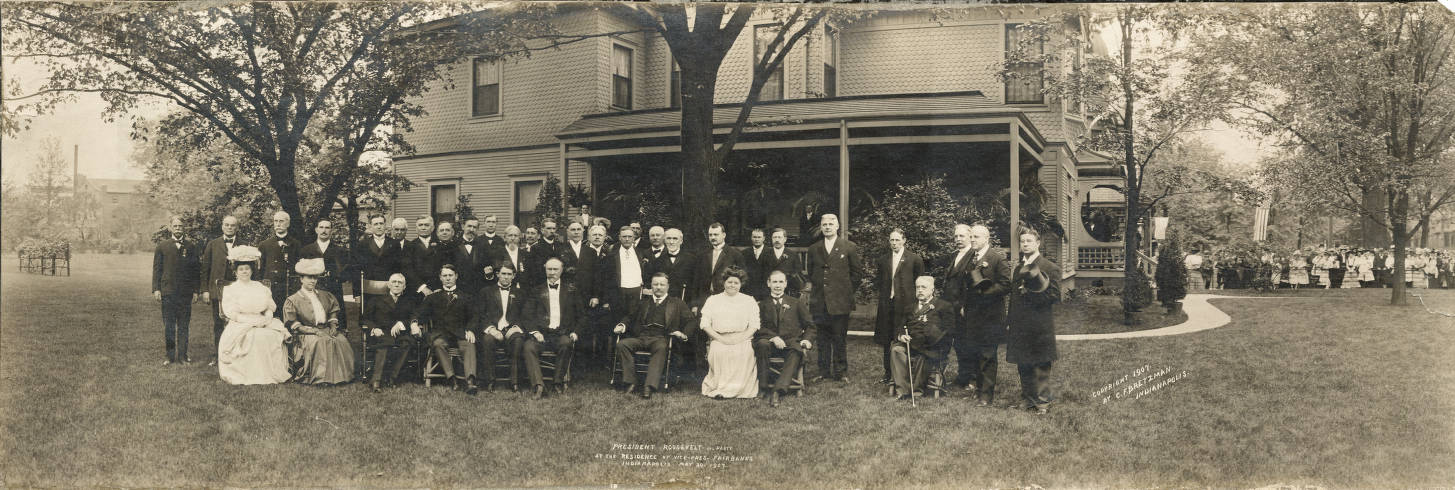
Later Years
Upon leaving public office, Fairbanks took a world tour in 1909 and 1910. He was an influential Methodist layperson and served as board chair of Methodist Hospital in Indianapolis. He took an interest in conservation and forestry and was president of the Indiana State Forestry Association.²
Charles W. Fairbanks died of nephritis in his home on June 4, 1918, at the age of 66 years of age. Charles and his wife Cornelia Cole Fairbanks (1852-1913, m 1874) are interned at Crown Hill Cemetery in Indianapolis, Sec: 24 Lot: 3³


L: Cornelia Cole Fairbanks R: Fairbanks grave at Crown Hill Cemetery in Indianapolis
The Columbia Club
The Columbia Club was established in 1888 as the Harrison Marching Society to support the candidacy of General Benjamin Harrison of Indianapolis as President. After Harrison won election in that year, the society decided to incorporate as a permanent organization and chose the name Columbia Club, based on the popular alternative name for America at the time.
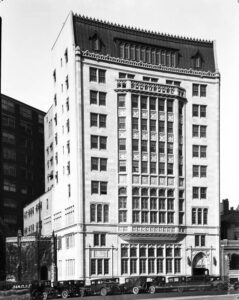
The Club has occupied three buildings at its prominent location on Monument Circle, and the current building opened in 1925. Designed in English Tudor style by the noted Indianapolis architects Rubush and Hunter and features lavishly appointed interiors with sculptures and plaster details by top Indiana artists.
The present building has hosted many famous personalities and has a tradition of important business and civic meetings being held there. In 1926, Queen Marie of Romania was welcome to the city with a banquet at the Club, and the next year Charles Lindberg, the American Eagle, was honored at the Columbia Club for flying solo from New York to Paris. In 1976, President Ronald Regan keynoted the annual Beefsteak Dinner held since 1891.
The Charles Warren Fairbanks portrait hangs prominently to the right of the fireplace in the Club’s lobby. The painting is visible in an opening scene in the film “Eight Men Out” based on the 1963 book by Elliot Asinof. This book was about the Chicago White Sox scandal known as the “Black Sox Scandal” and entailed eight Chicago White Sox players who conspired with gamblers to lose the 1919 World Series to the Cincinnati Reds.



References
1 Indiana Historical Society, MO100 Photographs, Box 1, Folder 1, Charles
2 Indiana Historical Society, Charles Warren Fairbanks Papers 1876 – 1929. M 0100, BV 1150-1169, BV 2546-2553, V 3309-3325
3 Find A Grave, Charles Warren Fairbanks
4 Pach Brothers, photographer. President Theodore Roosevelt and Senator Charles Fairbanks, seated in rocking chairs on a lawn at Sagamore Hill, Oyster Bay, N.Y. July 16. Photograph. Retrieved from the Library of Congress, www.loc.gov/item/2013649640/.
5 Indiana Historical Society, PAN_PO118_10x29_PAN0608
6 Indiana Historical Society, Columbia Club, c. 1925, PO130, N 8X10 096682F
7 A Guide to the History and Architecture of the Columbia Club, Columbia Club Foundations, Inc., brochure, undated
